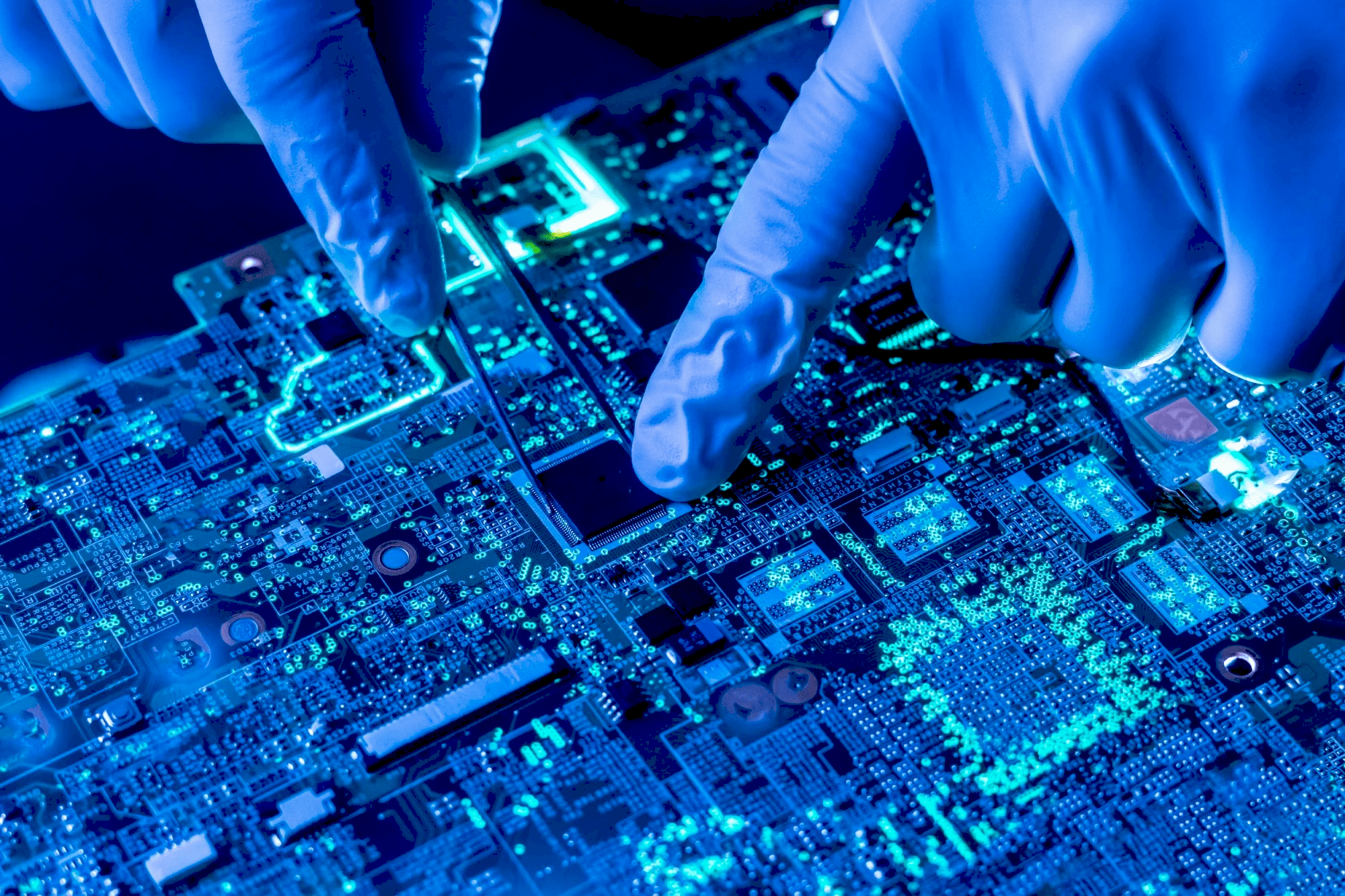Introduction to Nanotechnology: What is it and why does it matter?
Nanotechnology is a revolutionary field that manipulates matter on an atomic and molecular scale, typically within the range of 1 to 100 nanometers. This technology has the potential to transform various industries, including healthcare, manufacturing, and environmental science. Understanding nanotechnology is crucial as it opens new avenues for innovation and problem-solving in our daily lives.
At its core, nanotechnology involves engineering at an incredibly small scale, allowing for the creation of materials and devices with unique properties. For instance, nanoparticles can exhibit different physical and chemical properties than their larger counterparts, leading to advancements in drug delivery systems, stronger materials, and more efficient energy solutions. The implications of these advancements are vast, impacting everything from the medicines we take to the products we use every day.
As we delve deeper into the 21st century, the relevance of nanotechnology becomes increasingly apparent. Its applications not only promise enhanced performance but also solutions to pressing global challenges such as disease management and sustainable energy production.
Historical Overview: How did we get here?
The journey of nanotechnology began in the early 1980s, although its roots can be traced back to ancient practices in metallurgy and ceramics. The term “nanotechnology” was first coined by physicist Richard Feynman in 1959 during his famous lecture “There’s Plenty of Room at the Bottom,” where he envisioned the manipulation of individual atoms and molecules.
In 1981, the invention of the scanning tunneling microscope (STM) marked a significant milestone in nanotechnology, enabling scientists to visualize and manipulate atoms on a surface. This breakthrough opened the door for researchers to explore and innovate at the nanoscale, leading to the development of various nanomaterials and applications.
By the late 1990s and early 2000s, nanotechnology began to gain traction in commercial applications. Industries recognized the potential benefits of nanoscale materials, leading to investments in research and development. Today, we see nanotechnology embedded in numerous products, from sunscreens to electronic devices, showcasing its significant impact on modern life.
The Molecular Scale: What does engineering at the molecular level mean?
Engineering at the molecular level refers to the design and manipulation of materials on a scale that is not visible to the naked eye. At this scale, the properties of materials can differ drastically from those at a larger scale. For example, gold nanoparticles appear red or purple instead of the traditional gold color due to their size and interaction with light.
This unique behavior is crucial for various applications. In medicine, for instance, nanotechnology enables targeted drug delivery, where drugs can be delivered directly to diseased cells, minimizing side effects and enhancing treatment efficacy. In manufacturing, nanotechnology can create stronger, lighter materials, revolutionizing industries such as aerospace and automotive.
Furthermore, understanding molecular interactions allows scientists to design new materials with specific properties, leading to innovations in fields such as energy storage and environmental remediation. The ability to engineer at the molecular level represents a paradigm shift in how we approach technology and material science, paving the way for future advancements.
Revolutionizing Healthcare: Applications in Medicine
Nanotechnology is set to revolutionize healthcare by introducing innovative applications that enhance diagnosis, treatment, and prevention of diseases. At the forefront of this transformation is the development of nanoparticles that can deliver drugs with pinpoint accuracy. Traditional drug delivery methods often distribute medication throughout the body, leading to side effects and reduced efficacy. In contrast, nanotechnology enables targeted delivery, ensuring that drugs reach the diseased cells directly.
Key applications in medicine include:
- Targeted Drug Delivery: Nanoparticles can be engineered to attach to specific types of cells, such as cancer cells, allowing for precise treatment.
- Imaging and Diagnostics: Nanotechnology enhances imaging techniques, providing clearer images and earlier detection of diseases.
- Theranostics: This combines therapy and diagnostics, enabling simultaneous treatment and monitoring of disease.
- Tissue Engineering: Nanomaterials support the growth of new tissues, aiding in regenerative medicine.
For example, liposomal nanoparticles are being used to encapsulate chemotherapeutic agents, improving their solubility and stability. This approach has shown promise in reducing the adverse effects of chemotherapy, making treatment more tolerable for patients. The potential of nanotechnology in medicine is vast, paving the way for more effective and personalized healthcare solutions.
Innovative Manufacturing: The Impact of Nanotechnology
Nanotechnology is transforming manufacturing by introducing new materials and processes that enhance performance and sustainability. The ability to manipulate materials at the nanoscale leads to the creation of products that are stronger, lighter, and more efficient. This is particularly beneficial in industries such as aerospace, automotive, and electronics.
Some notable applications in manufacturing include:
- Nanocomposites: These materials combine nanoparticles with polymers to create stronger and lighter materials, ideal for aerospace components.
- Surface Coatings: Nanotechnology enables the development of coatings that are more durable, resistant to corrosion, and self-cleaning.
- Electronics: Nanoscale transistors and circuits improve the performance and energy efficiency of electronic devices.
- Additive Manufacturing: 3D printing with nanomaterials allows for the creation of complex structures with enhanced properties.
For instance, carbon nanotubes are being utilized in the production of lightweight yet strong materials for aircraft. This innovation not only reduces fuel consumption but also enhances safety. As manufacturing processes evolve with nanotechnology, industries are moving towards more sustainable practices that reduce waste and energy consumption.
Sustainable Energy Solutions: The Role of Nanotechnology
Nanotechnology plays a crucial role in the pursuit of sustainable energy solutions. By enhancing the efficiency of energy production and storage, it contributes to the global shift towards cleaner energy sources. Key advancements include the development of nanomaterials that improve solar cells, batteries, and fuel cells.
Some significant contributions of nanotechnology in energy production are:
- Solar Energy: Nanostructured materials enhance the absorption of sunlight, leading to more efficient solar panels.
- Energy Storage: Nanotechnology improves battery performance by increasing capacity and reducing charging times.
- Hydrogen Fuel Cells: Nanoscale catalysts enhance the efficiency of hydrogen production and fuel cell performance.
- Thermal Energy Management: Nanomaterials can be used to improve insulation and thermal management in buildings.
For example, perovskite solar cells, which utilize nanotechnology, have shown remarkable efficiency rates, making them a promising alternative to traditional silicon-based cells. The integration of nanotechnology in energy production not only enhances efficiency but also contributes to reducing the carbon footprint of energy systems. This shift towards sustainable practices is essential for addressing climate change and fostering a cleaner environment.
Environmental Impact: What Are the Potential Benefits and Risks?
Nanotechnology presents both significant opportunities and challenges regarding its environmental impact. On the one hand, its applications can lead to substantial benefits, such as cleaner manufacturing processes, reduced waste, and enhanced materials that require fewer resources to produce.
For example, nanotechnology can be utilized in water purification systems, effectively removing pollutants at a molecular level. This capability not only aids in providing clean drinking water but also minimizes the need for harsh chemicals traditionally used in water treatment. Furthermore, nanomaterials can enhance the efficiency of solar panels, thus promoting renewable energy sources and reducing reliance on fossil fuels.
However, the environmental impact of nanotechnology is not without risks. The long-term effects of nanoparticles on ecosystems and human health are still under investigation. Concerns arise regarding the potential toxicity of certain nanomaterials and their ability to accumulate in the environment or biological systems. Regulatory frameworks are still developing to address these concerns, highlighting the need for responsible research and application of nanotechnology.
To mitigate risks, it is essential to adopt a precautionary approach, ensuring that thorough testing and assessments are conducted before introducing nanotechnology solutions into the market. Continuous monitoring and research will be vital in balancing the benefits and risks associated with nanotechnology.
Future Trends: What Does the Future Hold for Nanotechnology?
The future of nanotechnology is promising, with several trends indicating its increasing integration into various sectors. As research progresses, we can expect advancements that will significantly impact industries such as healthcare, energy, and materials science.
Key trends to watch include:
- Personalized Medicine: The use of nanotechnology in drug delivery systems is poised to enhance personalized medicine, allowing treatments tailored to individual genetic profiles.
- Smart Materials: Innovations in nanomaterials will lead to the development of smart materials that can adapt to environmental changes, enhancing their functionality and lifespan.
- Energy Harvesting: Future nanotechnology applications will focus on improving energy harvesting techniques, such as more efficient solar cells and batteries, contributing to a sustainable energy future.
- Environmental Remediation: Continued advancements will likely enhance nanotechnology’s role in cleaning up pollutants and restoring ecosystems.
- Regulatory Developments: As the field evolves, we can anticipate more robust regulations to ensure the safe use of nanotechnology, addressing environmental and health concerns.
Overall, the future of nanotechnology holds great potential for addressing some of the world’s most pressing challenges, and its continued development will require collaboration among scientists, policymakers, and industries.
Real-World Examples: Can You Give Me Some Success Stories?
Numerous real-world examples illustrate the transformative impact of nanotechnology across various sectors. These success stories highlight how nanotechnology is already improving lives and industries.
Some notable examples include:
- Drug Delivery Systems: The use of liposomal nanoparticles in chemotherapy has revolutionized cancer treatment. These nanoparticles encapsulate drugs, improving their solubility and targeting cancer cells more effectively, which leads to fewer side effects.
- Water Purification: Companies like NanoH2O have developed nanotechnology-based membranes that enhance the desalination process, providing clean drinking water efficiently and sustainably.
- Electronics: The integration of carbon nanotubes in electronics has led to the development of faster and more energy-efficient devices, such as transistors that outperform traditional silicon-based components.
- Self-Cleaning Surfaces: The creation of nanostructured coatings for buildings and vehicles allows surfaces to repel dirt and water, reducing the need for chemical cleaners and maintenance efforts.
- Sustainable Agriculture: Nanotechnology is being used to develop smart fertilizers that release nutrients slowly, reducing runoff and promoting sustainable farming practices.
These examples showcase the vast potential of nanotechnology to create innovative solutions that enhance quality of life, drive economic growth, and promote sustainability.
Conclusion: Why Should We Care About the Advancements in Nanotechnology?
Advancements in nanotechnology are crucial for addressing some of the most significant challenges faced by society today. From revolutionizing healthcare and manufacturing to promoting sustainable energy solutions, nanotechnology holds the key to innovation across various fields.
Understanding the implications of nanotechnology is essential for harnessing its benefits while minimizing potential risks. As we continue to explore this exciting frontier, it is vital for researchers, industries, and policymakers to collaborate and ensure responsible development and application.
Ultimately, the advancements in nanotechnology represent a leap forward in our ability to improve lives and protect the environment. By embracing this technology, we can pave the way for a healthier, more sustainable future.



